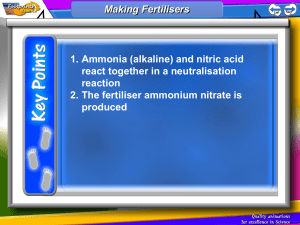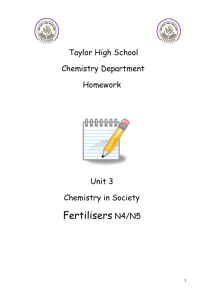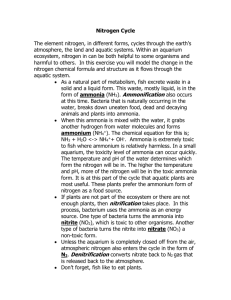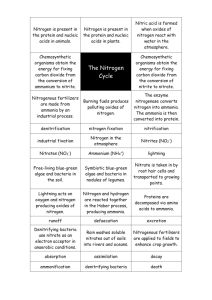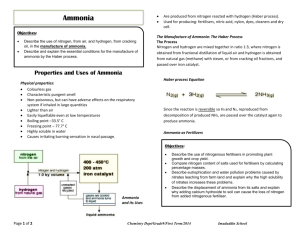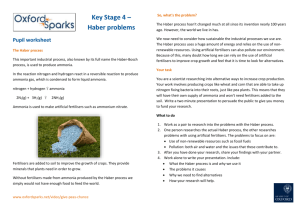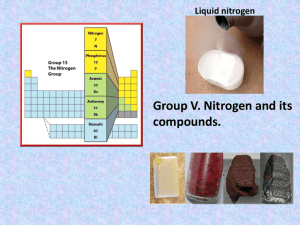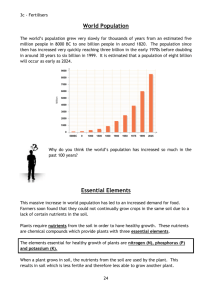Smithycroft Secondary National 5 Chemistry Unit 3: Section 11
advertisement
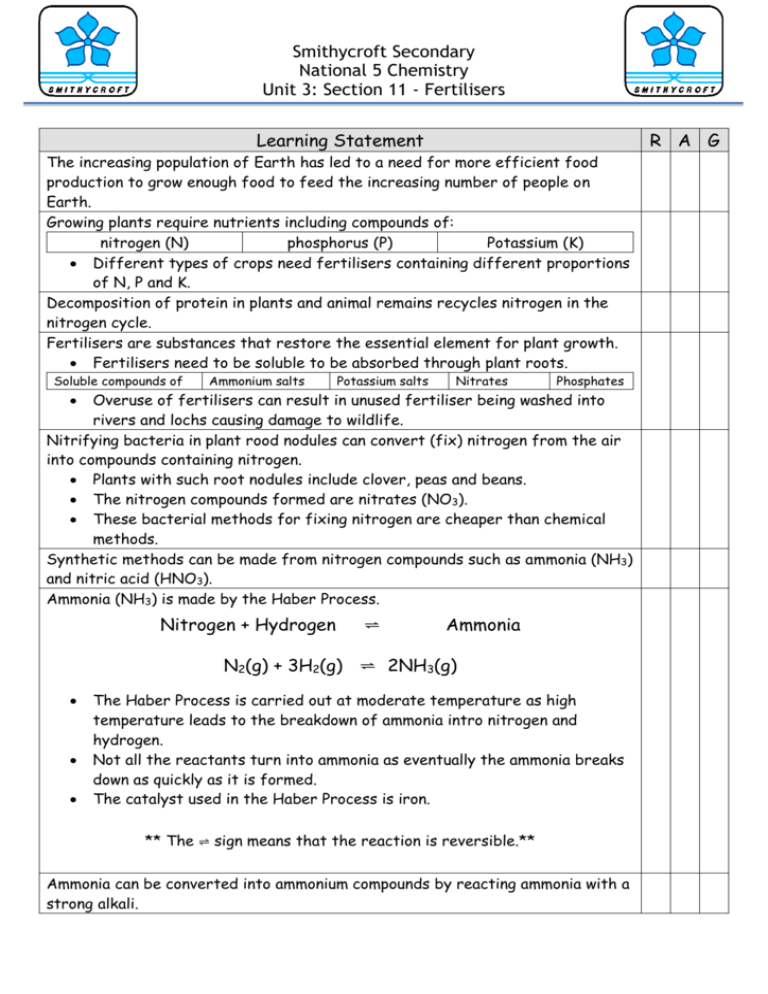
Smithycroft Secondary National 5 Chemistry Unit 3: Section 11 - Fertilisers Learning Statement R A G The increasing population of Earth has led to a need for more efficient food production to grow enough food to feed the increasing number of people on Earth. Growing plants require nutrients including compounds of: nitrogen (N) phosphorus (P) Potassium (K) Different types of crops need fertilisers containing different proportions of N, P and K. Decomposition of protein in plants and animal remains recycles nitrogen in the nitrogen cycle. Fertilisers are substances that restore the essential element for plant growth. Fertilisers need to be soluble to be absorbed through plant roots. Soluble compounds of Ammonium salts Potassium salts Nitrates Phosphates Overuse of fertilisers can result in unused fertiliser being washed into rivers and lochs causing damage to wildlife. Nitrifying bacteria in plant rood nodules can convert (fix) nitrogen from the air into compounds containing nitrogen. Plants with such root nodules include clover, peas and beans. The nitrogen compounds formed are nitrates (NO3). These bacterial methods for fixing nitrogen are cheaper than chemical methods. Synthetic methods can be made from nitrogen compounds such as ammonia (NH3) and nitric acid (HNO3). Ammonia (NH3) is made by the Haber Process. Nitrogen + Hydrogen ⇌ Ammonia N2(g) + 3H2(g) ⇌ 2NH3(g) The Haber Process is carried out at moderate temperature as high temperature leads to the breakdown of ammonia intro nitrogen and hydrogen. Not all the reactants turn into ammonia as eventually the ammonia breaks down as quickly as it is formed. The catalyst used in the Haber Process is iron. ** The ⇌ sign means that the reaction is reversible.** Ammonia can be converted into ammonium compounds by reacting ammonia with a strong alkali. Ammonia has the following properties. Colourless gas. Pungent Smell. Soluble in Water. Dissolves to form an alkali. . Ammonia is NH3 Ammonium is NH4+ Nitric acid is made by the Ostwald Process. The Ostwald Process involves the catalytic oxidation of ammonia to form nitric acid. Stage 1: Ammonia + Oxygen Nitrogen monoxide + Water Stage 2: Nitrogen monoxide + Oxygen Nitrogen dioxide Stage 3: Nitrogen dioxide + Oxygen + Water Nitric Acid The Ostwald Process is carried out at moderate temperature (900 oC). The reaction is exothermic so once started, the reaction does not require further heating. A platinum catalyst is used in this process. When nitrogen dioxide is dissolved in water, nitric acid is formed. The percentage mass of elements in fertilisers can be calculated. e.g. Calculate the percentage mass of nitrogen in ammonium nitrate, NH4NO3. Find the GFM Find the mass of N in Divide: mass in the formula formula by GFM NH4NO3. 2 X N = 2 X 14 = 28 g % Mass = 28/80 x 100% 2 X N = 2 X 14 = 28 4XH=4X1=4 %Mass = 35% 3 X O = 3 X 16 = 48 Total = 80 g
